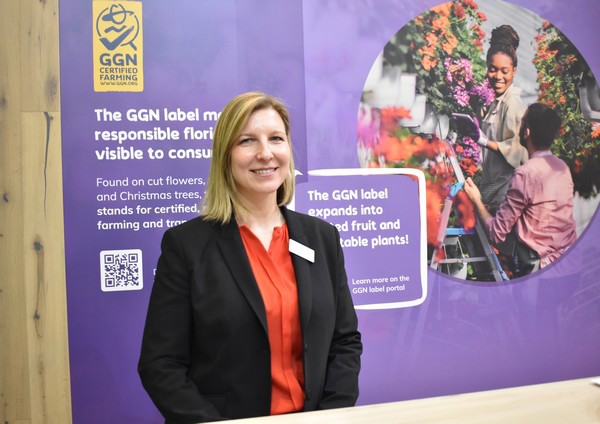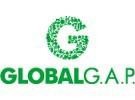Over the years, consumers are increasingly interested in where their products are coming from. Therefore the GGN label was launched to create a direct link between farmers and the consumer. It was introduced in 2016 solely for aquaculture products and for flowers and ornamental plants in 2017. The interest has grown significantly over the years, and the label further expanded with the addition of the fruits and vegetable scope in 2021, making it a cross-category label. In early summer 2023, the first potted fruit and vegetable plants with this label will be in stores.

Sarah von Fintel at the IPM Essen 2023 in Essen, Germany
Direct link between consumer and farms
The label can be used on herb, fruit, and vegetable plants in pots, flower or plant arrangements, flower bouquets, Christmas trees, and outdoor plants. But what does it stand for, and how does it work? In short, it is visible labeling for products from responsible cultivation and provides a direct link, and therefore transparency, between the consumer and the farm, explains Sarah von Fintel, Key Account Manager Floriculture. "The label comes with a 13-digit identification number - either a Chain of Custody (CoC) or GlobalG.A.P Number (GGN) or a QR code which is assigned to each product or producer group. When filling in the number on the GGN portal (www.ggn.org) or scanning the QR code, the consumer will be directed to the respective farm that provides information on the farm's size, location, and products or a trader profile that provides insights on the group of suppliers farms."
 Why the GGN Label?
Why the GGN Label?
Why should a grower, packer, or retailer choose the GGN label? Von Fintel: "The label is a tool for retailers to demonstrate their strong commitment to responsible sourcing for the consumers by buying and selling flowers and ornamentals that have been certified according to GlobalG.A.P standards and assessments. It also makes products stand out from the competition. For the growers, the label allows them to demonstrate their commitment to responsible farming, and the label means extra promotion as they are featured on the GGN label portal. We also provide promotional material that they can share, like visual material, point-of-sale leaflets, text proposals for their website, and so on."
Positive reactions
And reactions so far have been very positive, explains von Fintel. "Growers are pleased to have the chance to showcase their certification and demonstrate their hard work to consumers, while retailers are content to utilize a means of displaying their responsible sourcing policies and supply chain transparency. And the statistics confirm this enthusiasm as the amount of products with label increased to 1.670 in 2022, the license agreements increased to 220 in 2022, and the amount of GGN profiles to 396 in 2022."
Requirements
In order to use this GGN Label, the grower has to comply with two requirements. First, it needs to have a GlobalG.A.P IFA certification or a certification of an equivalent benchmarked scheme. On top of that, a GRASP Assessment with the status of full compliance is needed. When looking at the suppliers' side, the whole supply chain must be GlobalG.A.P CoC certified. In any case, the company responsible for the labeling of the product needs to sign a license agreement with GlobalG.A.P to get permission to use the GGN Label. This may either be that grower or the supplier.
What does it cost?
For GlobalG.A.P certified producers, suppliers, and retailers, there is no extra fee charged to use the GGN label, as it is already included in the producer registration fee producers pay together with their annual certification costs. Only for the producers of equivalent benchmarked schemes a participation fee is asked.
Increasing interest
The GGN label is the widest used in floriculture among retailers, DIY markets, and garden centers in retailers, but thanks to Lidl and Aldi, consumers can also find the GGN label in nearly all other European countries, she explains. "And the beginning of this year, two more German retailers confirmed that they will ask their suppliers for the GGN label. And we also see interest from retailers from Northern Europe. So we definitely count on further growth of the GGN label."
And not only in floriculture but also in other scopes, she expects growth as the label has become available for fruit and vegetable plants as well as herbs in pots since October 2022. This is a unique product, explains von Fintel: "As these plants are certified under the scope of Fruits & Vegetables, but handled and traded in the supply chain of Flowers & Ornamentals, they were a special product, and it was previously not possible to label them with the GGN label. But now it is, and we already have the first layout product approvals. In early summer 2023, we will see the first products with the GGN label on them."
For more information:
GlobalG.A.P
info@globalgap.org
www.globalgap.org
